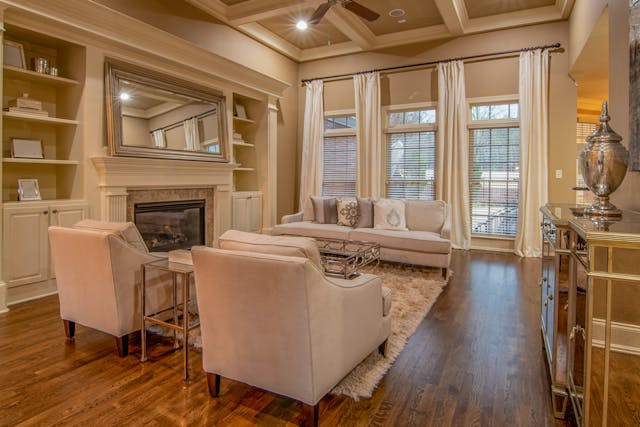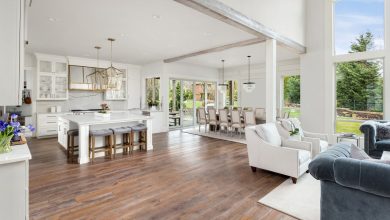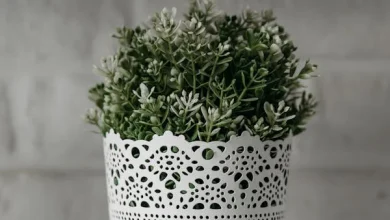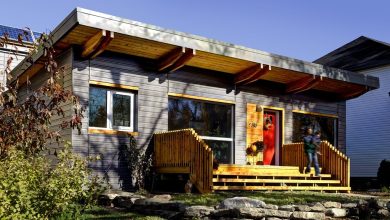
Space-Saving Solutions: 10 Tips to Enhance Your Tiny Home Design
The article is the exploration of 10 design ideas tailored specifically for tiny homes, covering every aspect from living room layouts to bathroom designs and lighting fixtures. With a focus on maximizing space and functionality while maintaining style and comfort.
Introduction
Living in a tiny home comes with its own set of challenges, but it also offers unique opportunities for creativity and innovation in design. With limited space, every square inch counts, making efficient use of space essential for creating a comfortable and functional living environment. In this article, we’ll explore 10 space-saving solutions to help you make the most of your tiny home design. From clever storage solutions to multipurpose furniture and smart layout ideas, these tips will inspire you to maximize every corner of your tiny abode and create a space that feels spacious, organized, and inviting. Whether you’re a minimalist enthusiast or simply looking to downsize, these strategies will help you transform your tiny house into a stylish and efficient home that meets all your needs.
Understanding Tiny Homes
Tiny homes, also known as micro-homes or compact houses, are dwellings that prioritize efficiency and minimalism in their design. They are typically smaller than traditional houses, with most tiny homes ranging from about 100 to 400 square feet in size. Despite their small footprint, tiny homes are fully functional living spaces that include all the essential amenities found in larger homes, such as kitchens, bathrooms, living areas, and bedrooms.
The concept of tiny homes has gained popularity in recent years as a response to various social, economic, and environmental factors. People are increasingly drawn to the idea of living more simply, with fewer possessions and a smaller ecological footprint. Tiny homes offer an affordable housing option for those looking to downsize, minimize their expenses, or live a more sustainable lifestyle. Additionally, they can provide housing solutions for individuals facing housing insecurity, such as the homeless or those affected by natural disasters.
Ideal Residents for Tiny Homes
Tiny homes are not only about reducing living space but also about embracing a simpler and more intentional lifestyle. While they may not be suitable for everyone, certain individuals or groups are particularly well-suited to tiny home living. Here are some ideal residents for tiny homes:
Minimalists
Individuals who value simplicity, minimalism, and decluttering are often drawn to tiny homes. Tiny living encourages minimalism by necessitating a reduction in possessions and focusing on the essentials. Minimalists appreciate the opportunity to live with less and prioritize experiences and relationships over material possessions.
Environmentalists
Those concerned about environmental sustainability often choose tiny homes for their smaller ecological footprint. Tiny homes typically require fewer resources to build and maintain, consume less energy for heating and cooling, and produce fewer greenhouse gas emissions. For environmentally conscious individuals, tiny homes offer a way to live more sustainably and reduce their impact on the planet.
Nomads
People who enjoy traveling or have a nomadic lifestyle may find tiny houses on wheels (THOWs) particularly appealing. THOWs provide the flexibility to move and explore different locations without sacrificing the comforts of home. Nomads can tow their tiny homes to various destinations, allowing them to live wherever their adventures take them while still enjoying the familiarity and coziness of their own space.
Retirees
Empty nesters or retirees looking to downsize and simplify their lives often choose tiny homes as a retirement housing option. Tiny homes offer affordability, low maintenance, and accessibility features that cater to aging individuals. Retirees can enjoy a smaller, more manageable living space while freeing up time and resources to pursue hobbies, travel, or spend time with family and friends.
First-Time Homebuyers
Young adults or individuals entering the housing market for the first time may opt for tiny homes as an affordable homeownership solution. Tiny homes offer a lower barrier to entry into the housing market, requiring less upfront investment and ongoing expenses compared to traditional homes. First-time homebuyers can enjoy the benefits of homeownership while avoiding excessive debt and financial stress.
Nature Enthusiasts
Outdoor enthusiasts who enjoy spending time in nature often choose tiny homes as a way to live closer to the great outdoors. Tiny homes can be located in remote or off-grid locations, allowing residents to immerse themselves in nature and enjoy activities like hiking, camping, or wildlife watching. For nature lovers, tiny homes offer a peaceful retreat from the hustle and bustle of city life and provide a deeper connection to the natural world.
Types of Tiny Homes
Apartment
Tiny apartments are compact living spaces typically found in urban areas where space is limited and housing costs are high. These units often consist of a single room that serves as a living area, bedroom, and kitchenette, with a separate bathroom. Apartments may feature space-saving furniture, built-in storage solutions, and multipurpose design elements to maximize functionality in a small footprint.
Single Loft
Single loft tiny homes feature a raised sleeping area, or loft, usually accessed by a ladder or staircase. The main floor below the loft serves as the living space, kitchen, and dining area, while the loft provides a cozy sleeping nook. Single loft designs are popular for their efficient use of vertical space, allowing for a spacious living area while maintaining a small overall footprint.
Dual Loft
Dual loft tiny homes feature two sleeping lofts, typically located at opposite ends of the living space. This design allows for increased privacy and flexibility, making it ideal for couples, families, or roommates sharing the tiny home. The main floor typically contains the living, kitchen, and dining areas, with each loft serving as a separate sleeping area. Dual loft designs maximize sleeping capacity without sacrificing living space.
Tiny House on Wheels (THOW)
Tiny houses on wheels, or THOWs, are mobile tiny homes built on trailer chassis, allowing them to be towed and relocated easily. THOWs offer flexibility and freedom, allowing residents to travel and explore different locations while bringing their home with them. These homes often feature compact layouts, lightweight construction materials, and space-saving furniture to accommodate life on the road.
Container Home
Container homes repurpose shipping containers into compact living spaces, offering a sustainable and affordable housing solution. These homes are constructed by joining multiple shipping containers together to create a larger living area. Container homes can be customized with windows, doors, insulation, and interior finishes to create comfortable and functional living spaces. They are often used as permanent residences, vacation homes, or guesthouses.
Tiny Cabin
Tiny cabins are small, rustic dwellings typically located in rural or wilderness settings. These cozy retreats offer a minimalist lifestyle surrounded by nature, with simple yet functional interiors designed for relaxation and enjoyment of the outdoors. Tiny cabins may feature wood construction, exposed beams, and natural finishes to blend seamlessly with their natural surroundings. They are popular among nature enthusiasts seeking a peaceful escape from city life.
10 Design Ideas for Tiny Homes
1. Living Room Design
In tiny homes, the living room often serves multiple functions, such as a lounge area, entertainment space, and sometimes even a dining area. To maximize space, consider using multipurpose furniture like sofa beds or storage ottomans. Opt for light colors and minimalistic furniture to create a sense of openness and airiness.
2. Dining Room Design
For dining areas in tiny homes, consider space-saving solutions like fold-down tables or wall-mounted tables that can be tucked away when not in use. Built-in benches or banquettes can provide seating while also offering additional storage underneath. Choose compact dining sets or bar stools that can be easily stored when not in use.
3. Kitchen Design
Efficient kitchen design is essential in tiny homes. Opt for compact appliances, such as slim refrigerators, two-burner cooktops, and under-counter microwaves, to save space. Utilize vertical storage with open shelving or hanging racks for pots and pans. Consider installing a fold-out countertop extension or kitchen island for additional workspace when needed.
4. Bedroom Design
In tiny homes, bedrooms are often located in lofts to maximize floor space. Use low-profile furniture like platform beds or storage beds to create a minimalist and functional sleeping area. Install built-in storage solutions like under-bed drawers or wall-mounted shelves to maximize storage space in the bedroom.
5. Bathroom Design
Bathroom design in tiny homes requires careful consideration of space and functionality. Opt for space-saving fixtures like corner sinks, compact toilets, and shower stalls with sliding doors. Use mirrors to create the illusion of space and maximize natural light. Consider installing a combination shower and bathtub to save space without sacrificing comfort.
6. Floor Plans
When designing floor plans for tiny homes, prioritize open layouts and flexible spaces that can adapt to various activities throughout the day. Utilize multifunctional furniture and built-in storage to maximize usable space. Consider incorporating sliding doors or pocket doors to save space and create a seamless flow between rooms.
7. Wall Plans
Maximize vertical space in tiny homes with creative wall plans. Install floor-to-ceiling shelving or bookcases to store books, decor, and personal belongings. Use wall-mounted hooks or pegboards to hang coats, hats, and bags. Consider adding murals or artwork to accentuate the walls and add personality to the space.
8. Furniture
Choose furniture for tiny homes that is compact, lightweight, and multifunctional. Look for pieces that can serve multiple purposes, such as a sofa bed or a coffee table with storage. Opt for modular furniture that can be easily rearranged or reconfigured to adapt to different activities and needs.
9. Lighting Fixtures
Select lighting fixtures that are both functional and stylish in tiny homes. Opt for small pendant lights or track lighting to illuminate specific areas without taking up valuable space. Consider installing LED strip lights or recessed lighting to create ambient lighting and visually expand the space. Choose fixtures with minimalist designs and neutral finishes to complement the overall aesthetic of the home.
10. Home Decorations
In tiny homes, less is often more when it comes to decorations. Choose a few carefully curated pieces that reflect your personal style and enhance the ambiance of the space. Consider incorporating natural elements like plants or botanical prints to bring life and color into the home. Use textiles like rugs, throws, and cushions to add warmth and texture to the space without overwhelming it with clutter.
Conclusion
In conclusion, designing and living in a tiny home requires creativity, resourcefulness, and thoughtful planning. By incorporating space-saving solutions and embracing minimalist principles, you can create a comfortable and functional living environment in even the smallest of spaces. Whether you’re optimizing floor plans, maximizing vertical storage, or selecting multifunctional furniture, the key is to prioritize efficiency without compromising on style or comfort.
Tiny homes offer a unique opportunity to simplify your lifestyle, reduce your environmental footprint, and live more intentionally. With careful consideration of design elements such as living room layout, kitchen organization, and bedroom storage, you can create a space that meets your needs while reflecting your personal taste and style.
As the popularity of tiny homes continues to grow, so too will the innovation and creativity in tiny home design. By staying informed about the latest trends and technologies in small space living, you can ensure that your tiny home remains functional, comfortable, and stylish for years to come.
In the end, whether you’re downsizing to embrace a minimalist lifestyle or seeking a cost-effective housing solution, the design ideas outlined here can help you make the most of your tiny home and create a space that truly feels like home.




